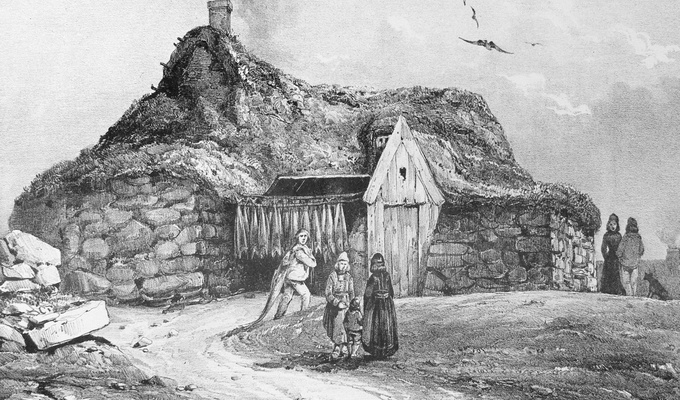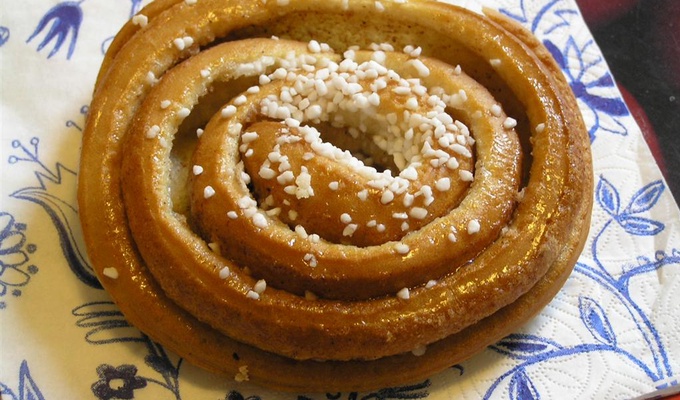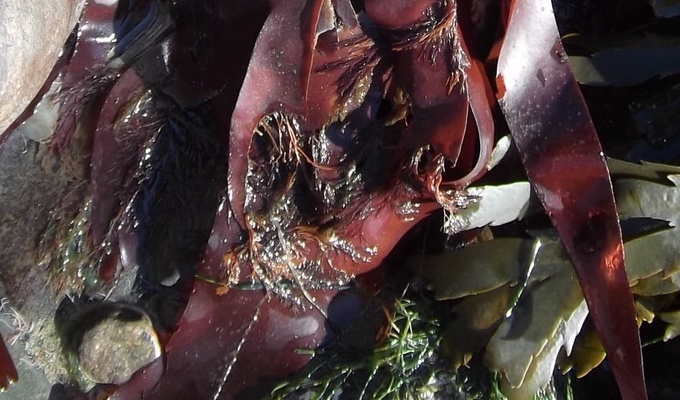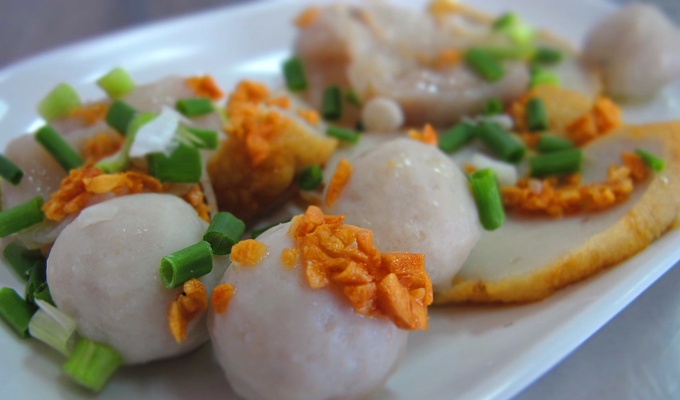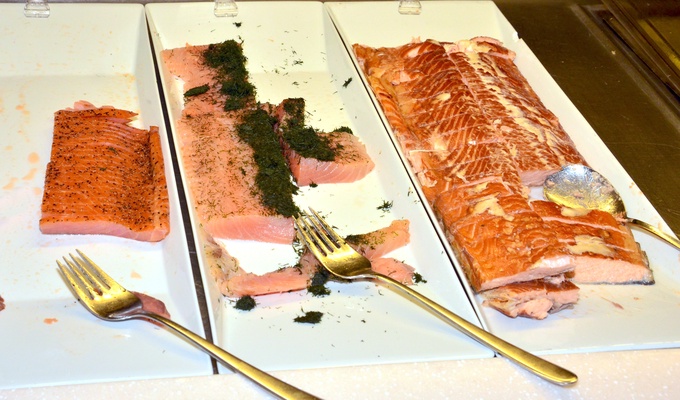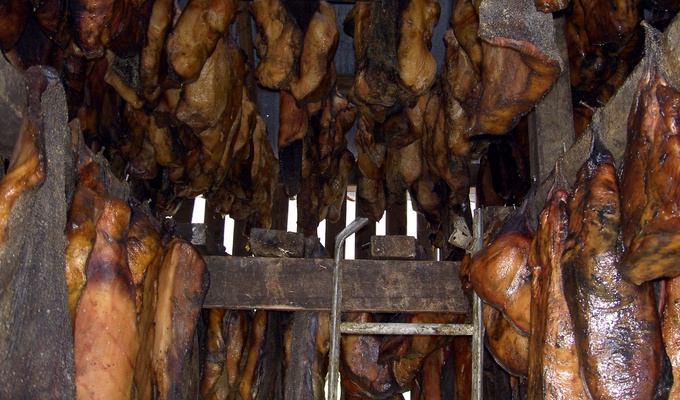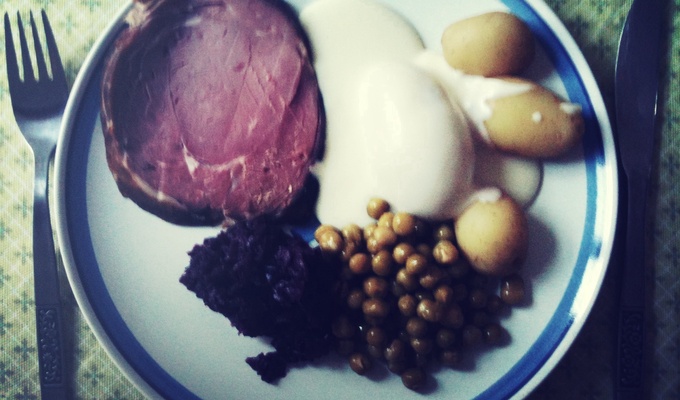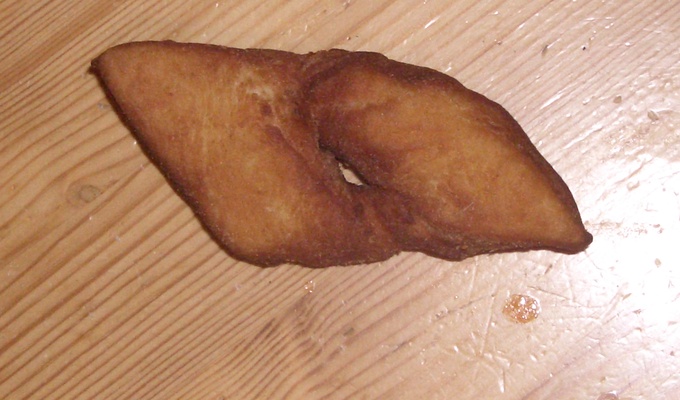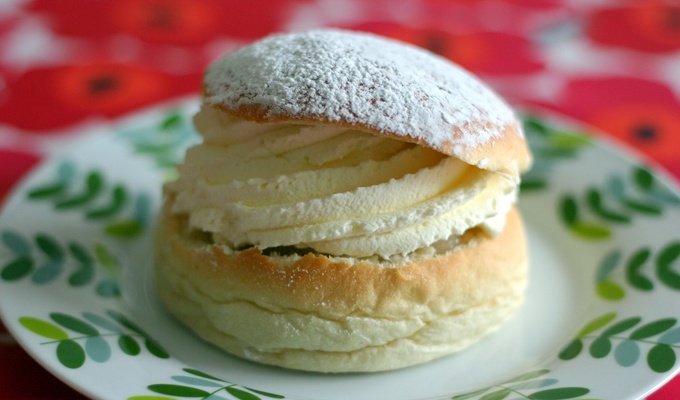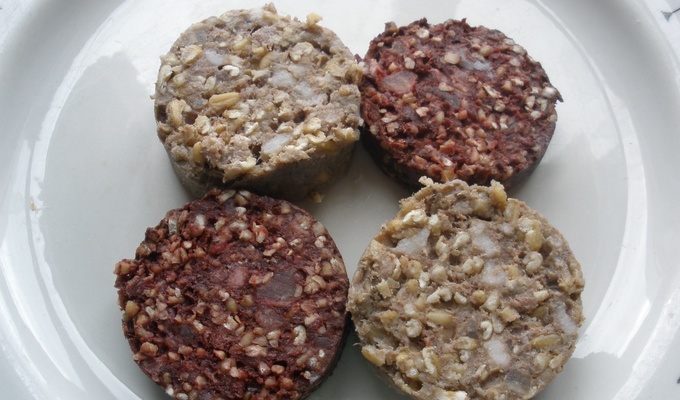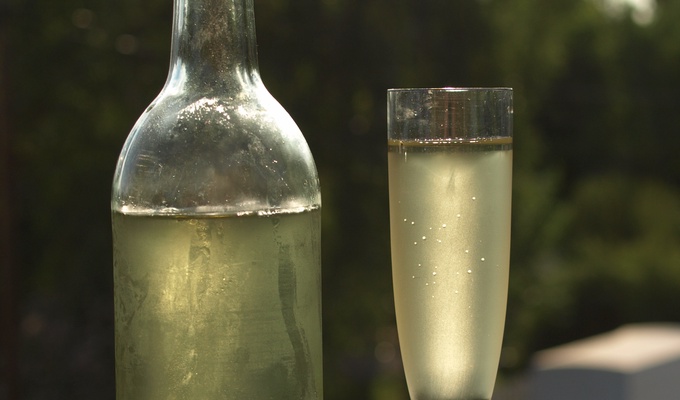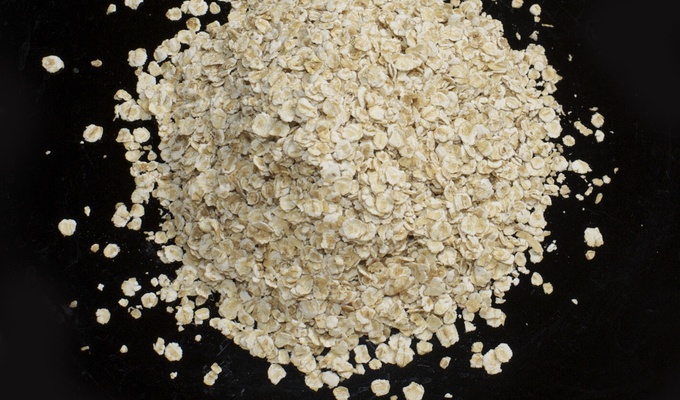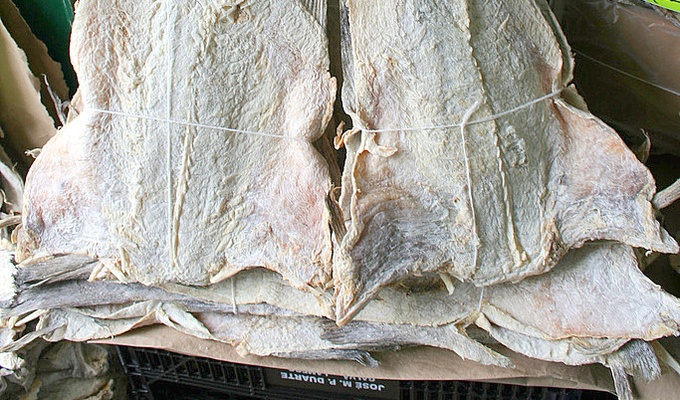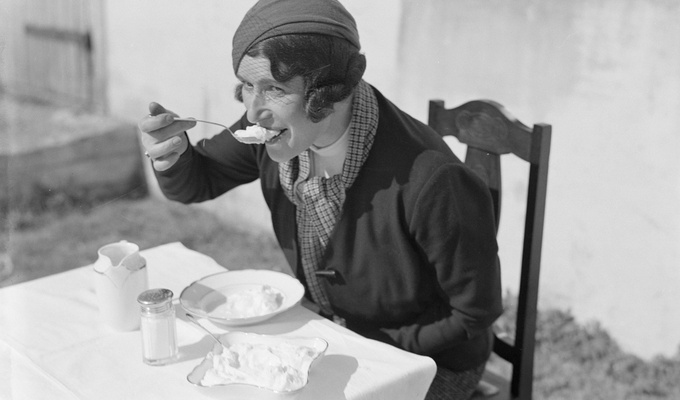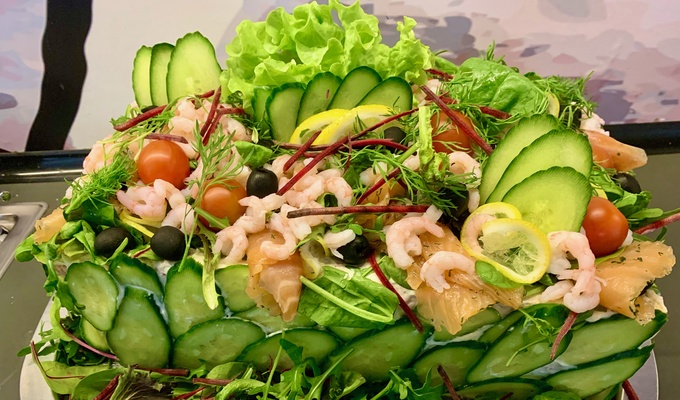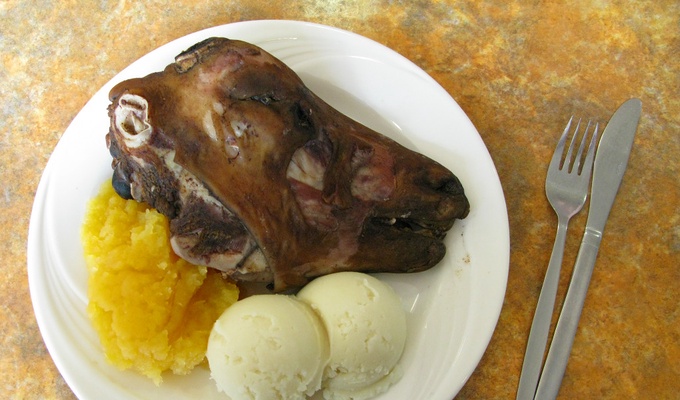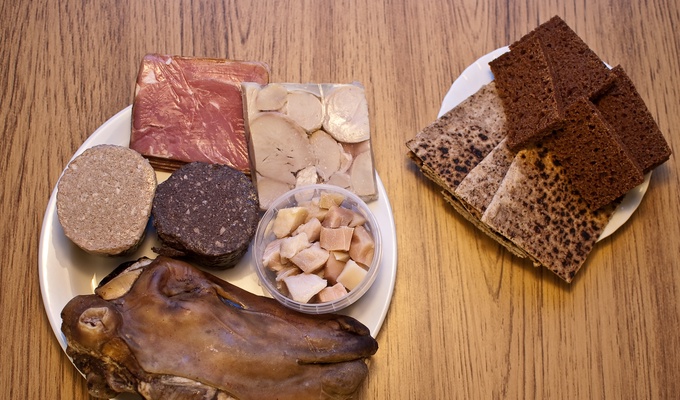Randabrauð, the cuisine of Iceland, has a long history. Important parts of Icelandic cuisine are lamb, dairy, and fish, the latter due to the fact that Iceland has traditionally been inhabited only near its coastline. Popular foods in Iceland include skyr, hangikjöt, kleinur, laufabrauð, and bollur. Þorramatur is a traditional buffet served at midwinter festivals called Þorrablót; it includes a selection of traditionally cured meat and fish products served with rúgbrauð and brennivín . The flavors of this traditional country food originate in its preservation methods; pickling in fermented whey or brine, drying, and smoking.
Modern Icelandic chefs usually emphasise the quality of available ingredients rather than age-old cooking traditions and methods. Numerous restaurants in Iceland specialise in seafood. At the annual Food and Fun chef's competition (held since 2004), competitors create innovative dishes with fresh ingredients produced in Iceland. Points of pride are the quality of the lamb meat, seafood, and (more recently) skyr. Other local ingredients include seabirds and waterfowl (including their eggs), salmon and trout, crowberry, blueberry, rhubarb, Iceland moss, wild mushrooms, wild thyme, lovage, angelica, and dried seaweed, as well as a wide array of dairy products.
Because of the history of settlement in a harsh climate, animal products dominate Icelandic cuisine. Popular taste has been developing, however, to become closer to the European norm. As an example, consumption of vegetables has greatly increased in recent decades while consumption of fish has diminished, yet is still far higher than any other developed country at about quadruple the average.
